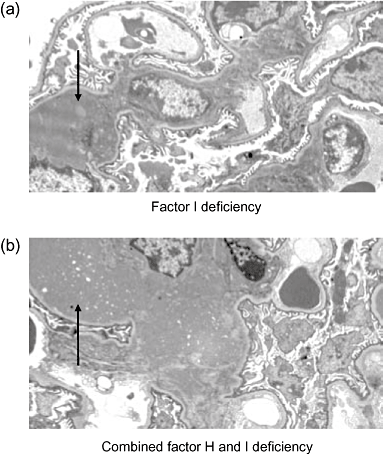Translational mini-review series on complement factor H: renal diseases associated with complement factor H: novel insights from humans and animals
- PMID: 18190458
- PMCID: PMC2276951
- DOI: 10.1111/j.1365-2249.2007.03574.x
Translational mini-review series on complement factor H: renal diseases associated with complement factor H: novel insights from humans and animals
Abstract
Factor H is the major regulatory protein of the alternative pathway of complement activation. Abnormalities in factor H have been associated with renal disease, namely glomerulonephritis with C3 deposition including membranoproliferative glomerulonephritis (MPGN) and the atypical haemolytic uraemic syndrome (aHUS). Furthermore, a common factor H polymorphism has been identified as a risk factor for the development of age-related macular degeneration. These associations suggest that alternative pathway dysregulation is a common feature in the pathogenesis of these conditions. However, with respect to factor H-associated renal disease, it is now clear that distinct molecular defects in the protein underlie the pathogenesis of glomerulonephritis and HUS. In this paper we review the associations between human factor H dysfunction and renal disease and explore how observations in both spontaneous and engineered animal models of factor H dysfunction have contributed to our understanding of the pathogenesis of factor H-related renal disease.
Figures



References
-
- Schwaeble W, Schwaiger H, Brooimans RA, et al. Human complement factor H. Tissue specificity in the expression of three different mRNA species. Eur J Biochem. 1991;198:399–404. - PubMed
-
- Alexander JJ, Quigg RJ. The simple design of complement factor H: looks can be deceiving. Mol Immunol. 2007;44:123–32. - PubMed
-
- Harrison RA, Lachmann PJ. The physiological breakdown of the third component of human complement. Mol Immunol. 1980;17:9–20. - PubMed
Publication types
MeSH terms
Substances
Grants and funding
LinkOut - more resources
Full Text Sources
Other Literature Sources
Miscellaneous

